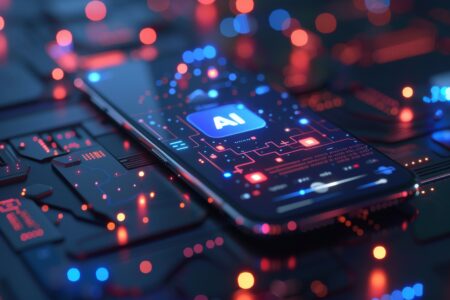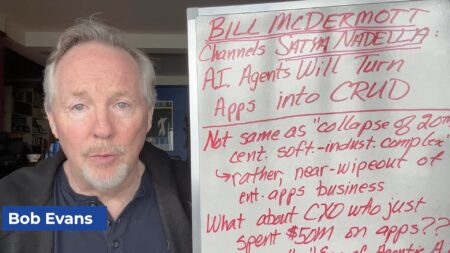Application development is changing with rising automation, AI, and more codeless generation. In recent years, this shift has accelerated with the maturity of low-code/no-code platforms.
Yet, as new development environments empower business folks with new technical abilities, some worry they might supplant existing engineers. Most professional programmers are skeptical of the citizen developer concept at first glance — some may even feel threatened by this new paradigm.
I recently met with Shlomo Amir, Chief Business Officer, EasySend, to gather more insights on whether low-code/no-code poses an existential threat to existing developers. According to Amir, low-code/no-code is not set to replace existing engineers anytime soon. However, it may alter where engineers sit in the business and who they work alongside.
Below, we’ll consider the impact low-code/no-code is having on traditional IT and consider how to maintain relevancy and preparedness as application development standards fluctuate.
The Trend Toward No-Code
Many professional developers scoff at the notion of citizen developers. How could non-IT business folks come close to building and maintaining a legitimate software application? Amir admits he’s “not shocked” to hear this perspective.
“Every time the paradigm is shifting there are those that feel threatened, or who aren’t believing,” said Amir.
This is not a new phenomenon. All disruptive technological shifts bring naysayers. And often, their predictions turn out wrong. For example, take what Steve Ballmer, CEO of Microsoft, said in 2007 in an interview with USA Today: “There’s no chance that the iPhone is going to get any significant market share. No chance.”
Could no-code reach a similar ubiquity in the future of work? Or is it just a passing fad? Well, Amir admits that low-code/no-code platforms “had a rough start.” Providers made high promises, but the delivery lagged behind. This made it easy for IT to say, “I told you so.”
Conversely, some are using low-code/no-code and benefiting greatly from early adoption. “No-code is not unique to one industry — it’s common in many areas,” noted Amir. From financial services to manufacturing, various sectors are adopting new development processes that loop in citizen developers.
How Low-code/No-code Will Change IT
Software requirements are increasing across the board, and the number of apps is growing dramatically. Citizen development promises to alleviate the burden on IT, bringing reduced operational costs and time savings. While this presents a significant opportunity, it carries the threat of disrupting traditional IT.
Low-code “doesn’t make IT redundant,” said Amir. Instead of replacing engineering jobs, low-code/no-code will more likely fill gaps in the workforce. In the process, it could create more jobs than it snuffs out. This is underscored by rising expectations for more application development across all business areas.
But, the most significant change low-code/no-code may bring is altering where engineers sit in the business and who they work alongside, says Amir. He predicts more developers will migrate from traditional, centralized IT to work more closely alongside specialized company groups.
In this new school IT, individual engineers “will more likely be part of a business unit,” described Amir. Empowering business units with various skillsets could bring more flexibility and performance across divisions.
Preparing For The Future
Organizations will likely always require developers to build core infrastructure. But, with no-code, business folks are more apt to construct workflows on the periphery. So, how should engineers prepare to stay relevant within this new workforce?
The first step is to realize low-code is an expansive concept and not by any means relegated to non-IT. Professional developers could reap significant time savings by adopting automation for code analysis, API integration, application templates, UI generation, or client library creation. Thus, it may behoove traditional developers to consider what utilities they can leverage to outperform.
A study by TrackVia found those with low-code knowledge are 13% more likely to expect a promotion. To become better positioned in the future workplace, developers could seek out training or certifications for popular low-code platforms. This knowledge will be critical for development shops building with no-code for their clients, predicted David Adkins, co-founder of Adalo in a previous interview.
However, on-the-ground training will be, by far, the best instructor. “Of course [developers] need to be prepared for what’s to come,” said Amir. “Getting certifications can help, but beyond this is identifying and acquiring knowledge independently.”
Another way to prepare for inevitable change is to adopt complementary skillsets. Throughout assembling teams at EasySend and previous ventures, Amir has found that Renaissance-esque employees were always more sought out. “What we’ve found is we don’t need one type, we need a hybrid.”
From UI/UX, to AI, DevOps, security, regulatory compliance — there are so many adjacent subjects to consider outside of programming application functions. This hybrid knowledge could help IT folks find unique opportunities across the corridor in business units, described Amir. “This is part of the cross-functional education that IT people will need to go through,” he says.
Threats Somewhat Abated
Standards for application development are changing. Our accelerated economy demands quicker release and deployment, and users now expect profound digital experiences with zero downtime. Engineers will always be critical assets to respond to these demands. “There will not be a reduction in IT professionals,” Amir reiterated. Yet, they will likely incorporate more automation into their workflows to retain competitiveness and adopt new powers.
Plus, central IT must still govern things like access control and security for app development platforms. “There will always be the need for software architects to oversee everything.” Let’s just hope this ongoing maintenance doesn’t outweigh the net production and agility that low-code/no-code affords.
Technology trends are shifting, as are the dynamics behind constructing digital experiences. As a result, traditional programmers are undoubtedly highly sought out. But all should take an active, ongoing approach to maintain relevancy and avoid obsoletion. “The ability to search, identify, and execute learning independently is a must today,” said Amir.






